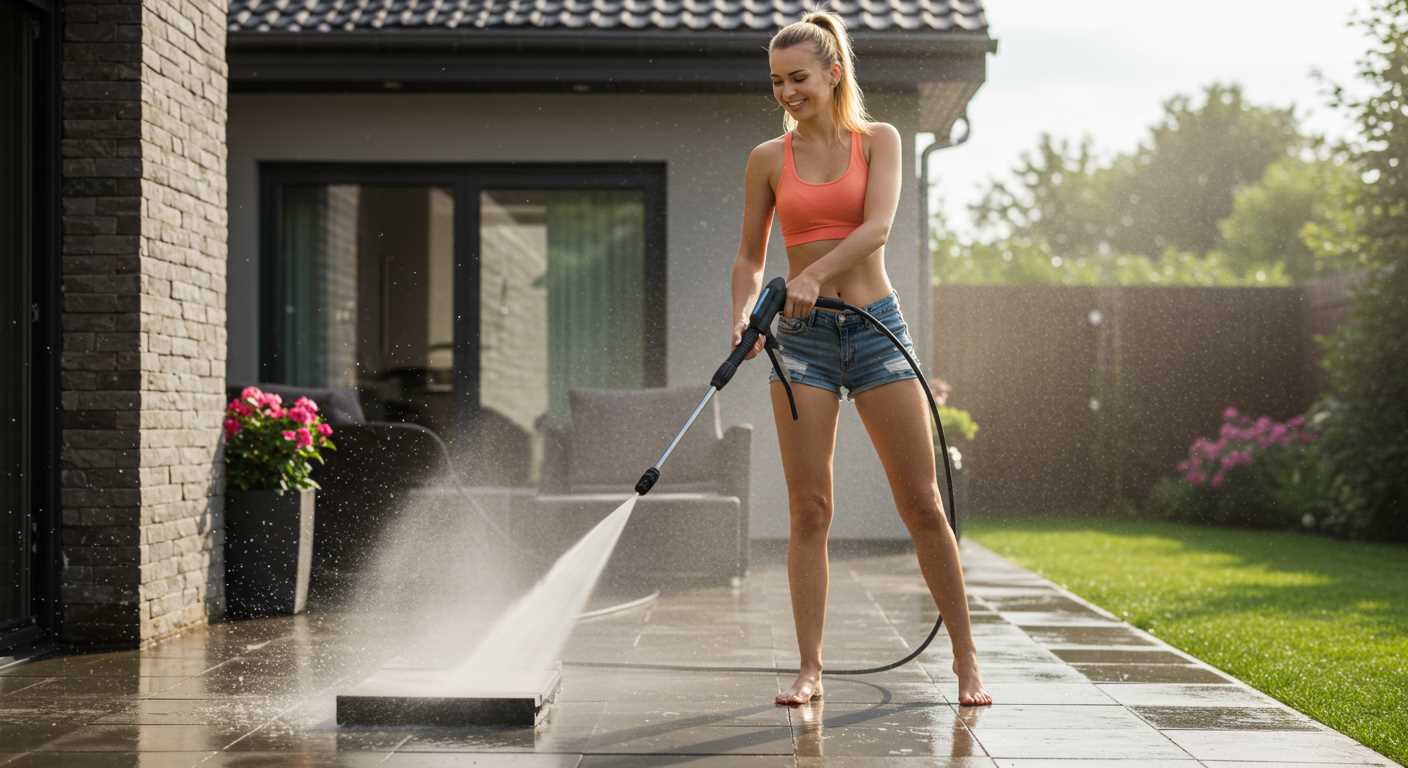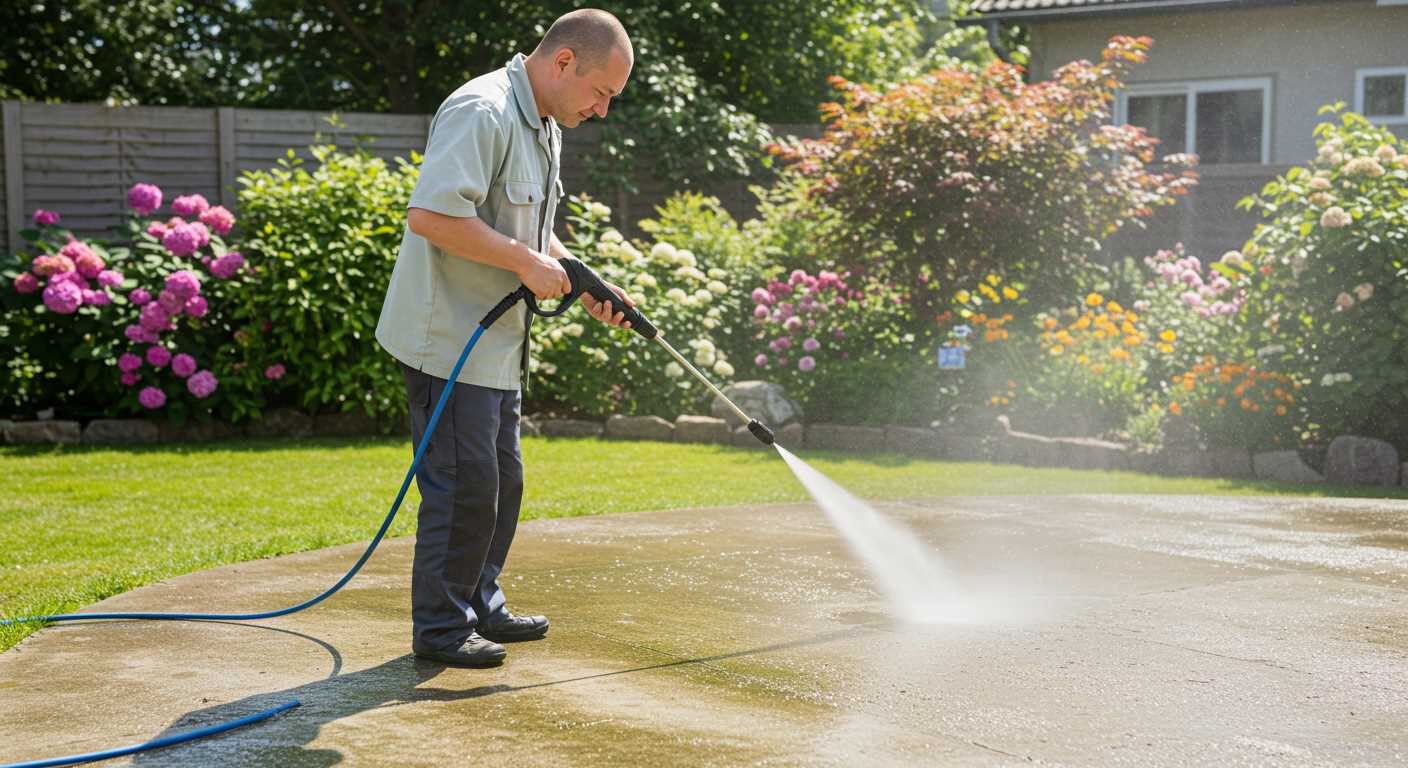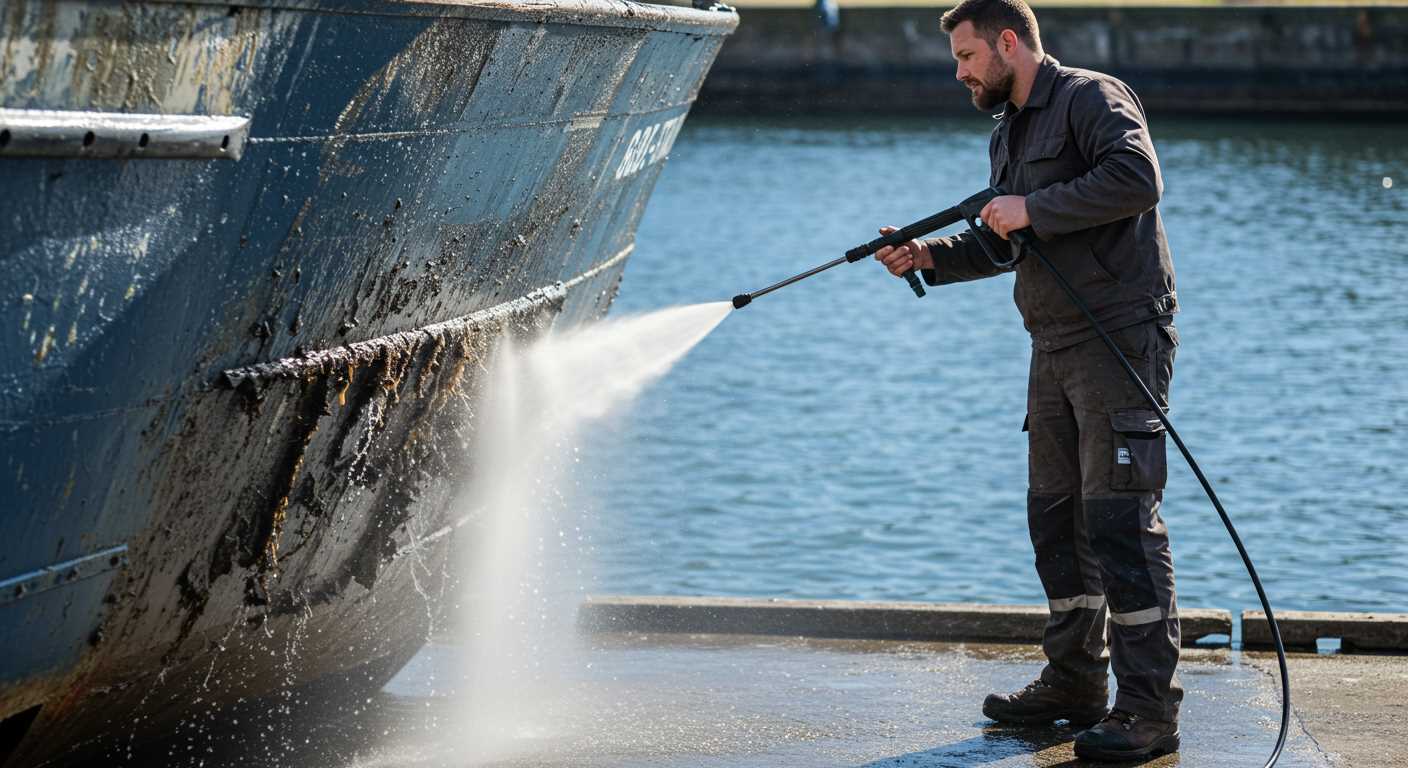

Choose a coupling that matches the diameter of your existing attachment, ensuring compatibility. A good fit prevents leaks and enhances performance during usage.
Carefully thread the end of the compact pipe onto the connection point, applying steady pressure. Use a wrench only if necessary, as overtightening may cause damage.
Inspect the seal for any gaps or irregularities. A rubber washer can significantly reduce the risk of leaks, securing the join and maintaining optimal flow rate.
Once attached, run a quick test to verify that the connection holds under pressure. This step is crucial for avoiding unexpected disconnections during your cleaning tasks.
Choosing the right hose length

For optimal functionality, I recommend selecting a length that enables comfortable movement while using the equipment. Generally, a range between 10 to 30 meters works well, depending on the area being cleaned. If access to tight spaces is necessary, opting for a shorter variant might be beneficial.
Consider the distance from the water source to the washing site. Longer tubes can lead to potential pressure loss, which diminishes effectiveness. Additionally, if the cleaning task involves upper levels, a longer variant could provide the reach needed without compromising performance.
In circumstances where manoeuvrability and flexibility are paramount, especially in residential settings, a mid-length option of approximately 15-20 meters often strikes the right balance. This choice provides ample reach while minimising kinks and tangles.
For large outdoor areas or commercial applications, consider extending to 30 meters or more, ensuring your equipment can easily cover expansive spaces. Just be aware of the implications on pressure and flow rates; using excessively long connections can lead to diminished cleaning power.
Ultimately, assess your specific requirements and environment to inform your decision on the ideal length. A considered choice ensures efficient operation and enhances your cleaning experience.
Identifying Compatible Fittings for Your Pressure Cleaning Device

Begin by determining the thread size and type of your existing attachment. Most models utilise a combination of metric or imperial fittings, typically classified as M22 or ¾ inch. Measure the male or female connections of your current setup to ensure precise matching.
Next, pay close attention to compatibility with various hose materials. Some brands feature proprietary attachments that may not align with standard fittings. Consulting the manufacturer’s specifications can clarify any discrepancies.
Common Fitting Types
Familiarise yourself with these prevalent fitting types:
| Type | Description |
|---|---|
| M22 | A widely recognised standard, typically found in high-pressure settings. |
| 3/8 inch | Common in commercial applications, allowing a robust connection for intense cleaning tasks. |
| 1/4 inch | Often used for lighter-duty devices, suitable for residential use. |
Adapters and Conversion Options
In cases where your new replacement doesn’t align, consider available adapters. These can bridge gaps between different fitting types, ensuring seamless integration. Always opt for high-quality adapters to avoid leaks and pressure loss.
Lastly, confirm that you’re using compatible locking mechanisms, such as safety collars or quick-release designs, which are vital for secure operability. Ensuring compatibility at every connection point will enhance performance and longevity.
Preparing the Equipment for Hose Replacement
Secure the machine on a stable surface to prevent any movement during the procedure. Disconnect the existing conduit from both the sprinkler unit and the water source. Drain any remaining liquid from the system by pulling the trigger of the spray gun while holding it downward. This will help remove excess water, reducing any chances of spillage.
Inspect the connections where the current conduit was attached. Ensure there are no signs of damage or wear, as these could impact functionality. Clean the threads and fittings with a cloth to eliminate debris or residue, allowing for a better seal with the new attachment.
Before attaching the new conduit, examine the handbook of your machine for manufacturer recommendations on fittings and torque specifications. This step ensures compatibility and maintains optimal performance. Additionally, to prevent any leaks, apply plumber’s tape to the threads if suggested by the manufacturer.
Once the new interchangeable item is ready, connect it securely to both ends, ensuring a tight fit to avoid leaks. Verify that all connections are aligned correctly and that there is no cross-threading. This preparation will significantly enhance the longevity and efficiency of your cleaning device.
Removing the old hose safely and efficiently
Begin by disconnecting the equipment from its power source to avoid accidents during the removal process. Verify that the unit is completely off and, if applicable, unplugged.
Next, use the appropriate tools for your fittings. Usually, a wrench or pliers will work best. Ensure that you’ve securely grasped the connector before applying pressure to avoid slipping, which could damage the fitting.
- Loosen the connection gently. Turn counterclockwise to detach the old line.
- Watch for any residual water in the line, as this could cause splashes when disconnecting.
- Inspect the old connectors for wear or damage. If they seem faulty, consider replacing them alongside the tubing.
For added safety, use a towel or rag around your hands while handling fittings that may have sharp edges. If the previous connection is stubborn, apply lubricant to the threads to assist in loosening them, ensuring it’s compatible with your materials.
Once detached, assess the condition of the previous equipment. Look for corrosion or other indicators that the component may need replacement in the future. Dispose of the old line responsibly, following local guidelines for environmental safety.
By following these clear steps, you’ll ensure a simple and safe removal process, paving the way for a smooth installation of your new tubing.
Inspecting and Cleaning Hose Connections
Inspect the connections for any signs of wear or damage before attaching a new line. Look for cracks, abrasions, or corrosion that could compromise performance.
Cleaning Steps
- Detach the fittings from the equipment carefully.
- Use a soft brush or cloth to remove dirt and debris from the threads and coupling areas.
- Flush the interior of the connectors with water to eliminate any lingering contaminants.
- Dry the fittings thoroughly before reassembling.
Regularly check seals and O-rings for wear. Replace them as needed to maintain a tight connection, preventing leaks during operation.
Maintaining Connection Integrity
- Ensure that connections are tight but not over-tightened, which can cause damage.
- Apply a lubricant specifically designed for plastic and rubber to threads to enhance the seal.
- Store equipment in a clean, dry environment to prevent buildup of grime on connectors.
Following these practices will extend the lifespan of the connectors, ensuring safe and effective operation of your cleaning equipment.
Attaching the short pressure hose correctly

When connecting the new flexible line, make sure the fitting is aligned properly with the inlet or outlet according to the manufacturer’s specifications. Using the provided wrench, fasten the connection securely, avoiding over-tightening, which can damage the threads.
Before starting, inspect the seals on both ends; replace them if they appear worn. If necessary, apply a small amount of thread sealant tape to ensure a secure attachment and prevent leaks.
After securing everything, test the assembly by turning on the system briefly, checking for any leaks around the connections. Should you notice any issues, disconnect and re-examine the fitment before proceeding with your cleaning tasks.
Testing for leaks after installation
After securing the new line, it’s paramount to conduct a leak test. Begin by ensuring all connections are tight yet not overtightened to avoid damaging the fittings. Next, reconnect the water supply and turn it on without activating the motor. Check each joint for any signs of dripping or moisture buildup.
Should you notice any leaks, turn off the water source immediately. Reassess the coupling points and make necessary adjustments. If issues persist, inspect the rubber seals or O-rings for wear or misalignment; these components are often the culprits behind persistent leaks.
For enhanced certainty, apply a diluted soapy solution around the connection points. If bubbles form, it indicates a leak that requires further action. Make final adjustments, tighten where necessary, and recheck until the system maintains a secure seal.
Remember to repeat this test after initial use as vibrations can loosen fittings over time. Regular maintenance checks will ensure optimal performance and prevent complications in the future.
Maintaining the hose for longevity
Regular inspection for wear or damage is key. Check for kinks, abrasions, or cuts before use; any visible issues warrant replacement. Ensuring connections are secure can prevent leaks and prolong the life of the accessories.
Always coil the tubing properly after use. Avoid tight bends, as this may weaken the material over time. Store the equipment away from direct sunlight and extreme temperatures to prevent degradation. Using a dedicated storage solution can further shield it from potential hazards.
When cleaning or performing maintenance, use mild detergents and avoid harsh chemicals that can harm the material. Rinsing the connections thoroughly can eliminate residue and prevent clogging, ensuring optimal performance during operation.
It’s beneficial to lubricate threaded connections periodically. A light coating of suitable grease or PTFE tape can enhance the seal and make disassembly easier during future replacements.
Replacing worn components immediately prevents further damage and costly repairs. Being proactive about maintenance not only extends functionality but also contributes to a safer user experience. Prioritising care will keep the device operating efficiently for years to come.








